Significant findings include:
1. Infus-a-port catheter inserted via the right IJV & positioned appropriately within the right atrium
2. Left peri/supra-hilar opacity in the setting of known lung cancer
3. Large cardiothoracic ratio ~ 60%
2. I would like to compare the left peri/supra-hilar opacity for size which may contribute to the patients SOB
3. Things like cardiac causes, anaemia etc cannot be assessed with a chest x-ray
4. The CTR is large, is this new or old?
2. The CTR however has changed over the 1 month interval (50% to 60%)
Differential diagnosis for an acutely widened CTR include
1. Expiratory film
2. Acute pericardial effusion
Clinical Correlation for tamponade physiology is pertinent
Tamponade Physiology aka Beck's Triad
- Low BP
- Jugulovenous distension
- Muffled Heart Sounds
For the record, non-acute widened CTR include
1. Cardiomegaly: Left ventricle, right ventricle or both
2. Cardiac tumour
3. Large epicardial fat pad (rare)
4. Chronic pericardial effusion
The patient went on to have an echo confirming the moderate sized pericardial effusion with 'echo' evidence of tamponade. There were no clinically obvious signs of tamponade.

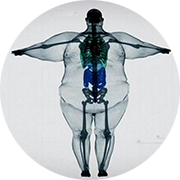
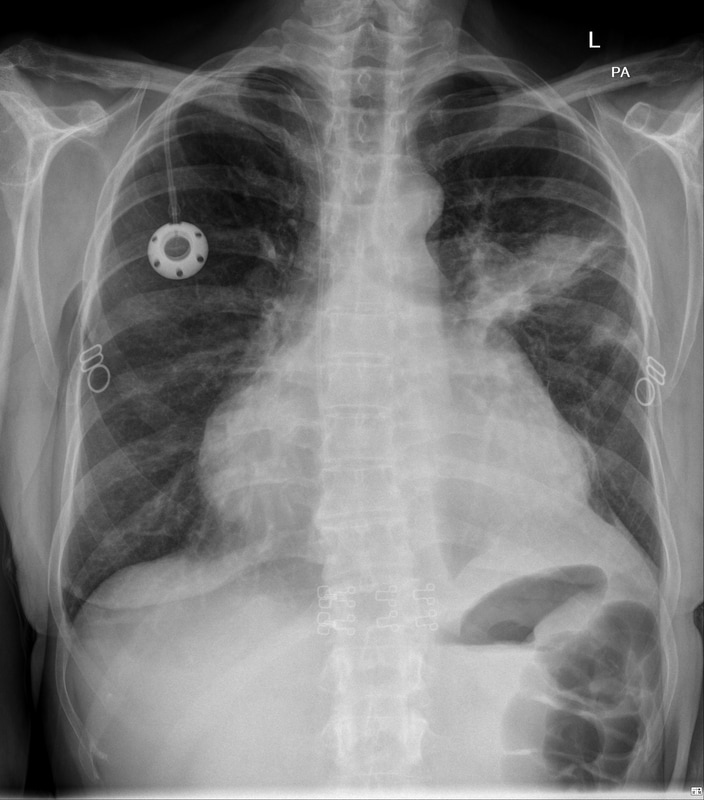
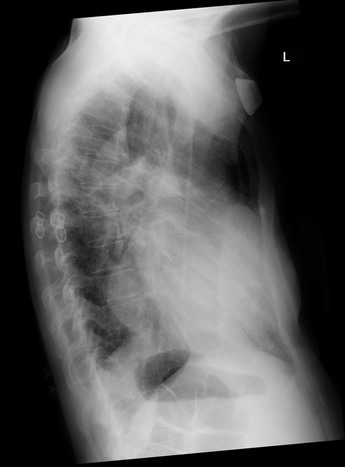
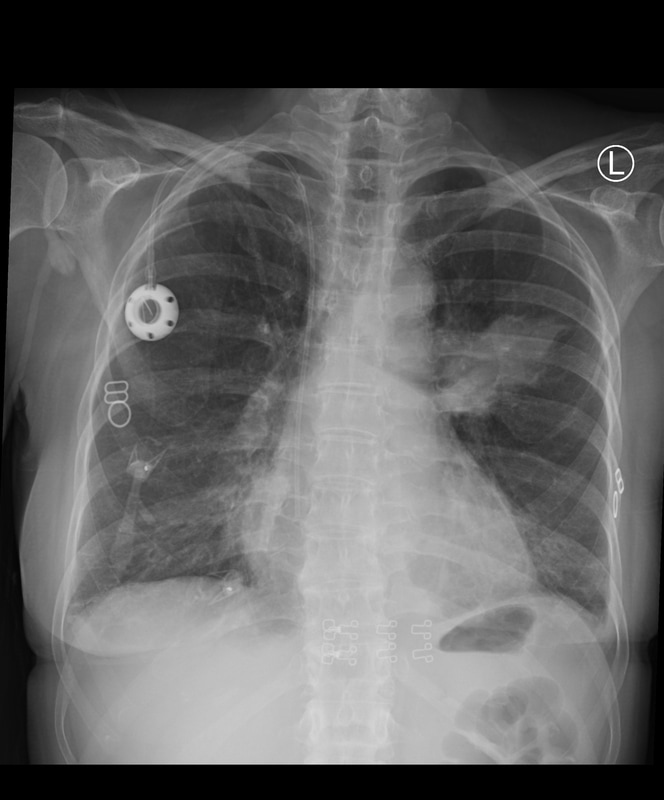
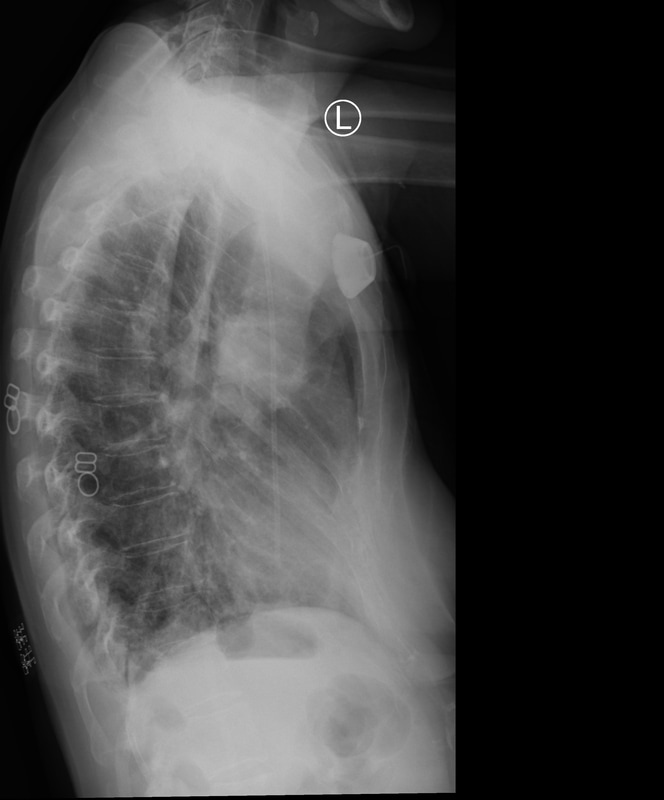
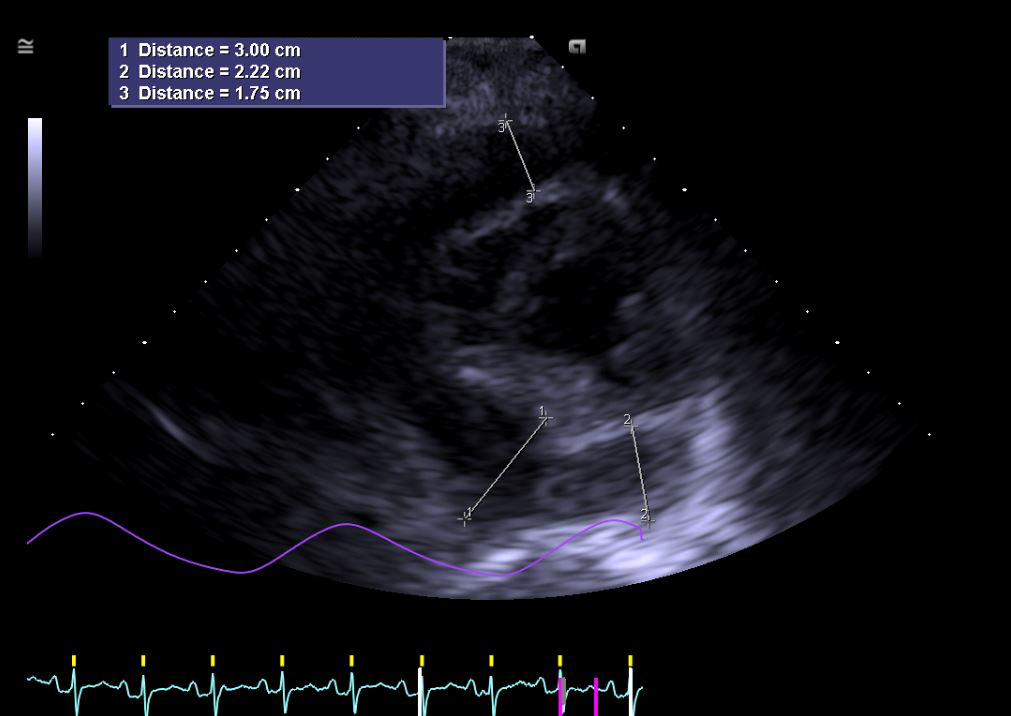
 RSS Feed
RSS Feed
